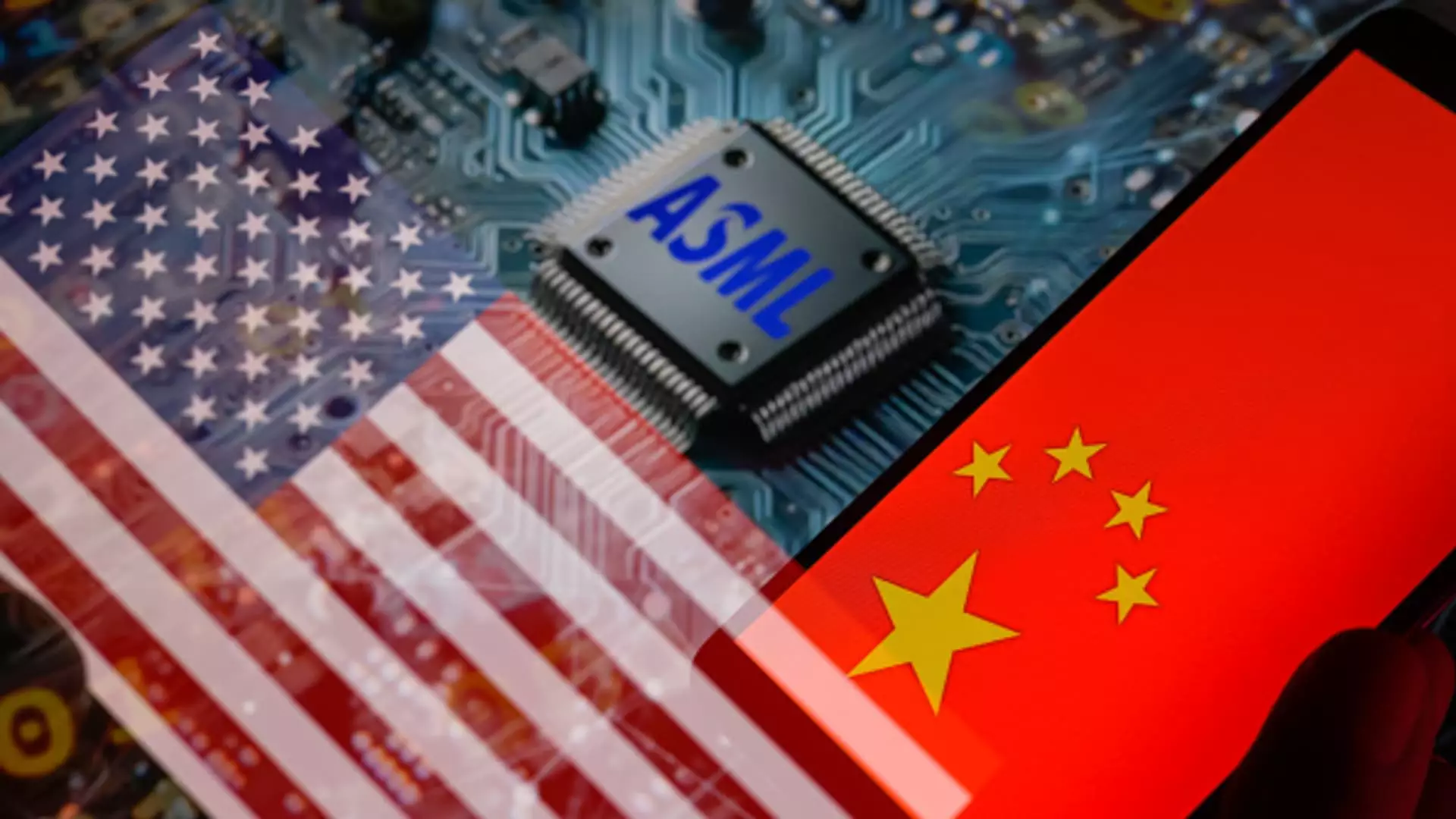ASML, a semiconductor equipment manufacturer headquartered in the Netherlands, plays a pivotal role in the global chip supply ecosystem. At the heart of this ecosystem are its advanced lithography machines, most notably the extreme ultraviolet (EUV) systems. These machines are essential for manufacturing cutting-edge chips that power various electronic devices, and they are utilized by major players such as Nvidia and Taiwan Semiconductor Manufacturing Company (TSMC). As the semiconductor industry is closely tied to geopolitical dynamics, recent developments regarding U.S. export restrictions on ASML’s equipment, particularly to China, beckon a closer examination of their ramifications on ASML’s financial forecasts and market standing.
In a recent earnings report that was inadvertently released a day early, ASML revealed its projected net sales for 2025 could reach between €30 billion and €35 billion, which translates to approximately $32.7 billion to $38.1 billion. This figure aligns with the lower end of earlier projections, signaling an impending decline in expected revenue. The startling reality is that while ASML reported net sales of €7.5 billion for the third quarter, the net bookings fell significantly short of predictions, totaling only €2.6 billion against a consensus estimate of €5.6 billion. This divergence shocked market observers, leading to a dramatic 16% drop in ASML’s stock value and a staggering loss of over $50 billion in market capitalization within a single trading day.
Deciphering the Factors Behind Disappointing Bookings
Analysts attribute the underwhelming bookings primarily to specific weaknesses within ASML’s client base, notably firms like Intel and Samsung. These giants are currently undergoing shifts in their manufacturing processes, which directly affects their order volumes for ASML’s equipment. Additionally, the firm’s financial outlook for 2025 indicates a normalization of its revenue share derived from China, expected to dip from 29% to around 20%. This adjustment reflects a broader geopolitical climate where U.S. and now Dutch export controls are redefining the landscape of semiconductor manufacturing and equipment procurement.
In light of these restrictions, ASML’s Chinese customers are preemptively stockpiling less advanced machinery, such as deep ultraviolet (DUV) lithography systems. While this strategy may temporarily bolster ASML’s sales figures, the long-term picture is less favorable. The key takeaway is that ASML’s most advanced EUV machines remain off-limits to Chinese entities due to prior compliance rules. Instead, firms in China have increasingly turned to ordering DUV machines, thus engaging in a form of short-term strategy to bypass the limitations imposed by export controls.
ASML finds itself at a critical juncture as it navigates the shifting sands of international relations and trade policies. Experts, including Chris Miller from Tufts University, highlight that while restrictions may have catalyzed initial purchases of older technology from Chinese firms, the longer-term forecast suggests a steep decline in revenue from this market segment.
Future Revenue Estimates and Market Sentiment
The projection issued by ASML discouragingly hints at a potential 48% decrease in revenues from the Chinese market year-on-year by 2025. This bleak outlook starkly contrasts with previous estimates and adds a layer of complexity to ASML’s relationship with China, which has historically been a space for considerable growth. Analysts at Bank of America express similar sentiments, emphasizing the sharp decline expected in the firm’s revenue tied to its operations in China, raising concerns about over-reliance on this market.
The restrictions from the U.S. government significantly impact ASML’s operational forecasts, particularly as they relate to the Chinese market. The pivotal recognition here is that while demand has risen for ASML’s legacy technology amidst regulatory pressures, the trajectory suggests a regressive pattern in terms of revenue streams moving forward. As geopolitical tensions continue to shape business landscapes across industries, ASML’s reliance on China accentuates the precarious balance between innovation, trade policy, and market sustainability. As the company prepares to face a new normal characterized by tighter export regulations, its strategies and adaptations will undoubtedly be scrutinized, both by analysts and investors alike.

